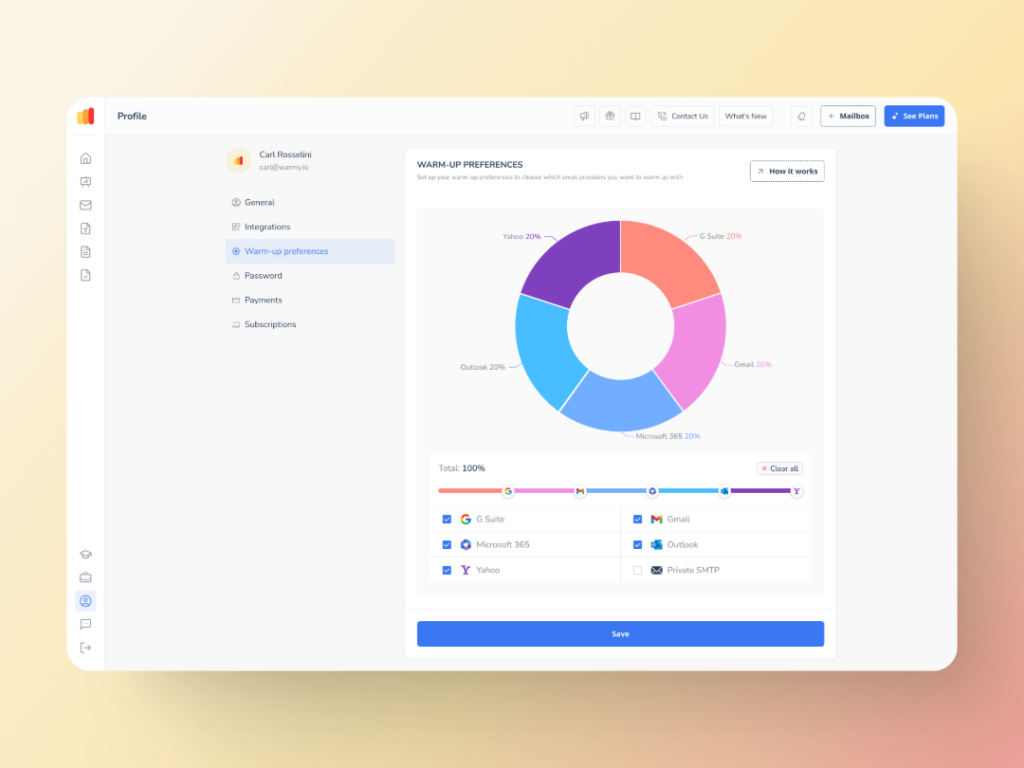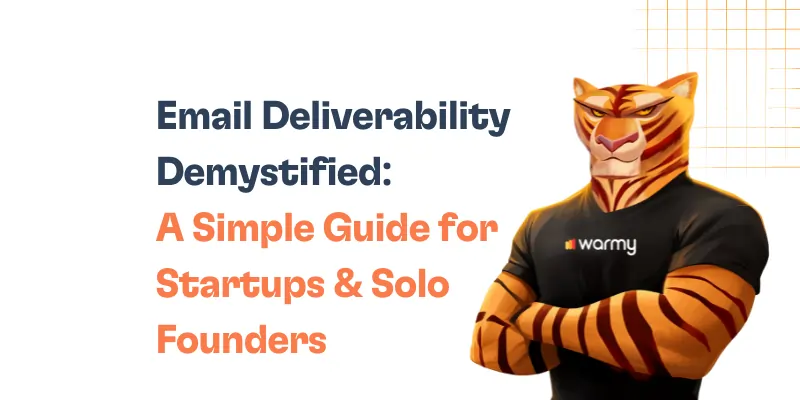Cold email is very much an integral part of any sales and marketing strategy this 2025. Despite the growing influence of social media and other digital channels, email still sits on the throne as the best way for businesses to reach out to prospects.
In fact, email marketing has one of the best ROIs at a whopping $36 for every $1 spent, so it’s one of the most inexpensive ways to reach new leads and increase conversions. Then there’s cold email sequences—an entirely different world inside the bigger world of email marketing—that take the concept of cold email outreach to the next level.
Understanding cold email sequences
- A cold email sequence is a progression of strategically spaced emails that introduces you to leads followed by succeeding messages. Sequences can be applied in outbound sales, lead generation campaigns, and outreach for brand awareness.
- Rather than a single email, these sequences initiate a dialogue with the prospect and lead to better response rates and engagement.
- Cold email sequences are typically made up of three to seven emails sent over days or weeks. Every email is more valuable than the last, showing more of the product, focusing on a different angle and encouraging them to the next step of taking further action.
But creating an effective cold email sequence isn’t easy. It’s not only a matter of writing great copy. They involve timing, personalization, and follow-up tactics, and an understanding of the psychology behind why people respond to email outreach at all.
The advantages of sequences over single emails
Did you know that 82% of buyers will actually agree to having a meeting with sellers who reach out to them? What does this mean? It shows that cold email outreach is definitely worth a shot.
- More engagement: Sequences keep prospects engaged over time where single emails can get lost in the shuffle of overflowing inboxes. If a prospect reads the succeeding emails in a sequence, this signifies interest. Sending at least three follow-up emails can already increase response rate by 28%.
- More chances to connect: You have several opportunities to engage with a sequence, and a one-off email may not be enough to get you a response.
- Builds momentum: The accumulation of sequences helps to gradually grow interest and motivation to act.
How to craft cold email sequences that convert
A cold email sequence that actually gets opened—and replied to—demands strategy. From the segmentation of your audience to great copywriting, every piece of the puzzle is vital. Here are the best ways to create cold email sequences that work:
Email at the right time for maximum impact
The success of your cold email sequences can largely depend on the timing. By sending emails at the right time, you would not only get your emails seen, but you can also improve your chances of receiving a response. But when exactly should you be sending your cold emails?
- In general, intervals of 2-4 days between each email should be okay.
- Send emails during office hours (generally between 9 AM and 11 AM in the recipient’s time zone) for higher open rates and to avoid spam filters.
- Avoid weekends. Weekend emails are ignored, or tagged as spam.
Bonus tip: If you’re using any email marketing platform, these schedules and intervals can be automated.
Structure the sequence itself for engagement
The format of your cold email sequence is as important as the timing. Your sequence should make sense so you can lead your prospect to respond to your call to action.
An effective cold email sequence follows a simple formula and includes these components:
- A short introduction to who you are, what your company is and why you are reaching out. Write something short, polite and captivating.
- Showing appreciation for the recipient’s time and alluding to their pain points. This is empathetic and will capture their attention.
- A brief pitch for the product—just enough to keep them interested and not so much that they’re no longer curious.
- Additional resources.
- Invitation for a conversation.
Some things to keep in mind when constructing your sequence:
- In each step, aim to build curiosity. Don’t give everything away and leave the prospect eager for the next email. This creates desire and increases the chances of a reply.
- Be respectful in your follow-ups. Maintain a friendly and professional tone, combined with an assumption that you know they’re busy.
- Don’t just repeat your opening statement. Every follow-up should offer something that the last didn’t—be it a different type of value offered, a different piece of relevant content, or a different testimonial.
- Use the subject line effectively. A captivating subject line translates to a higher chance of follow-up emails being read. Create urgency (“Last opportunity to connect!”) or interest (e.g., “Can we help solve this for you?”) (Read more: 14 Tips For Writing An Excellent Email Subject Line + Examples)
Personalize emails to make them appear custom-made
If you want a high response rate, personalization is one of the best tactics to use. People reply to emails that seem like they were written just for them—not generic, one-size-fits-all emails. In fact, emails with personalized subject lines have 26% higher open rates.
Some other tips:
- Use their name in other places aside from the subject line. It’s a personal touch that instantly softens the email and makes it feel less robotic.
- Mention their company or industry. If you can refer to something unique about their business or their sector, it indicates to them that you’ve done your research and that your email isn’t simply another generic message in a mass campaign.
- Reference recent activity. Did the prospect engage with your content recently or attend a webinar? Mention it. This makes the outreach feel more relevant and timely.
Segment your audience for tailored sequences
One-size-fits-all emails don’t usually produce many results to begin with. To get as much value as possible from your email sequences, audience segmentation is key, as it can lead to as much as a 760% increase in revenue.
Segmenting your leads enables you to tailor your message to each demographic’s requirements and desires. For instance, a sales email written to a marketing manager at a tech startup will look very different than one sent to a CFO at a financial institution.
🔖 Relevant Reading: Tools for segmenting the customer base
Write effective copy that gets seen
Let’s get clear on something: a well-written copy does not guarantee conversions. It doesn’t even guarantee deliverability, either.
The solution is to find the delicate balance between content that reads nicely and gets prospects to act—all while avoiding spam filters and landing in the inbox. Because if your email doesn’t land in the inbox, your pretty words won’t do anything.
Some reminders when it comes to writing email copy:
- Be clear and to the point. Get your primary offer into the first few lines.
- Focus on value. What issue do you “solve” for them? How will it benefit them?
- Don’t ramble. Keep your message to the point and don’t elaborate if not necessary.
- Your email copy should be easily readable and scannable. This means short paragraphs, bullet points, and minimal fluff words.
- Employ language which emphasises the worth and benefits of your product or service, however don’t make it too ‘salesy’. You want the prospect to perceive that you’re offering a solution, not a hard sell.
Plus, here’s a comprehensive resource on Words That Trigger Spam Filters (And How to Fix Them with a Template Checker).
How to use Warmy’s Sequence Builder to simplify cold email sequence creation

Warmy’s Sequence Builder is designed to simplify the cold email sequence creation process, allowing you to build a series of emails that are automatically sent to your leads based on predefined rules. Here’s how to use the tool to your advantage:
- Start with the intro email. Select the creative level you prefer, the email mood, keywords, and your email address.
- Click on ‘Generate’ and you will receive an AI-generated draft based on your prompt. This draft comes with an assessment from Warmy’s Template Checker so you can tweak accordingly.
- Finish tweaking the rest of the follow-up emails.
- Integrate the written sequences with your warmup or email marketing tool.
Maximize your cold email sequence with Warmy’s full suite of deliverability tools
As important as cold email sequences are for engaging people, deliverability is just as necessary because you want to make sure your messages hit the inbox and not the spam folder.
This is where Warmy’s suite of tools kicks in. They were built to help cold outreach campaigns convert more effectively by building a solid foundation for warmup.
Automated email warmup with Warmup Preferences

Email warm-up is Warmy’s core feature designed to improve email deliverability by gradually increasing the volume of emails sent from your domain. This process helps to build your domain’s reputation with email service providers (ESPs), reducing the risk of your emails being flagged as spam.
Meanwhile, the new Warmup Preferences feature allows senders to choose if they want to use B2B or B2C customers for engagement patterns to tailor the behavior and insights to their business type. They can also customize the warmup’s distribution across different providers.
🔖 Relevant Reading: The Science and Process of Warming Up Newly Created Email Domains
Domain Health Hub

The Domain Health Hub is a domain-level health dashboard with the following features:
- A domain health score based on factors like authentication, blacklist status, and inbox placement tests.
- Weekly and monthly options to monitor your spam rate trends and overall deliverability performance.
- Comprehensive DNS status checks to easily validate SPF, DKIM, DMARC for stronger authentication & security.
- Optimized multi-domain monitoring so users can manage all their domains from one dashboard and identify which ones need immediate attention.
Template Checker

You need to make sure the cold email templates you are using are deliverability-friendly. The template checker scans your email template against a specific criteria to ensure that it doesn’t contain any elements that might trigger spam filters.
Additionally, the new Chrome Extension version of the template checker allows senders to know if their emails are likely to be flagged by spam filters—enabling you to make necessary adjustments before sending.
Harness the power of cold email sequences
Cold email sequences have always been a solid way to acquire leads, build relations, and generate conversions. But the success of these sequences depends on a number of things, and email deliverability plays a big role.
Ready to take your cold email outreach to the next level? Get started today, and unlock the full potential of your cold email campaigns with Warmy’s robust email automation tools. Get started now—sign up for free.











